By Kaitlyn Squibb
I was born in the spring of 1997, and before I was a year old, I was diagnosed with hypohidrotic ectodermal dysplasia. When I was just nine months old, I would get really high fevers from teething and ear infections and my parents couldn’t get the fevers to come down. My parents noticed little bubbles on my hands and feet where sweat was trapped under my skin.
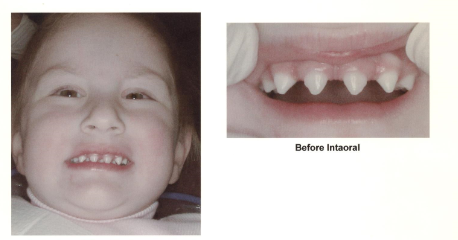
As I grew my teeth began to poke their way through my gums, but they were conical (cone shaped) and sharp. My pediatrician recommended that my parents bring me to Boston Children’s Hospital for genetic testing, which is where I was diagnosed. This was all very new to my parents, as they had never heard of this condition before and I was the first person in our family to have it.
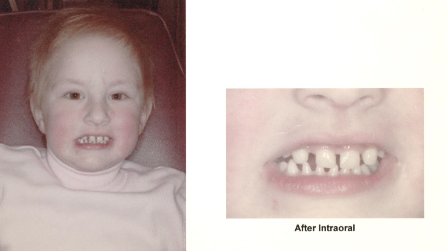
When I was three years old, I had my first dental procedure. I had my front four teeth bonded with caps. For the time being, I had pretty normal-looking teeth, thanks to my Pediatric Dentist, Dr. Jim Haas. Though I still did not look “normal”, and I definitely didn’t feel it. My hair was thin and sparse and my skin was (and still is) very fair. When the weather would get warm, I stayed inside for recess. I had a few solid friendships that carried me through the years of elementary school, but the occasional comment or insensitive question always found its way to me, and I did my best to answer without showing my insecurity.
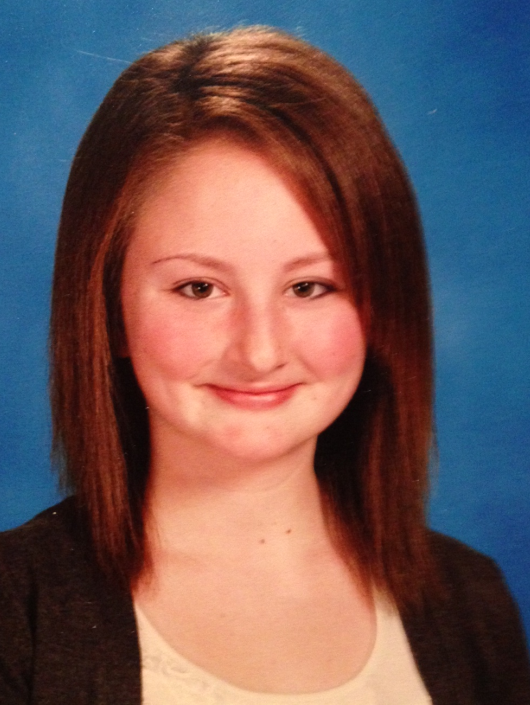
By the end of middle school, my hair had grown to where it just touched my shoulders, and out of my 16 teeth only my front two were permanent. All the rest were small, baby teeth. But now, the other kids my age were getting braces to fix their gappy-toothed smiles, and I wasn’t. People would ask when I was getting braces, and I would simply answer, “I don’t know.”
For me it was easier than trying to explain something I was unsure of myself. I knew about my condition, but I didn’t know what was happening with my teeth. My dentist had told me I had to finish growing before they could do anything permanent.
For me, middle school was a waiting game. I waited for my hair to grow and I waited to see what my future held as far as my teeth were concerned.
When high school began, it was challenging for me to adjust. I attend a regional high school where the surrounding four towns send their students. Coming from my small town middle school with only 100 kids in my graduating class, it was difficult for me to get accustomed to seeing over 3,000 faces every day. I was self-conscious and shy because these three thousand new faces were not used to my gappy-toothed smile, or my constantly rosy-cheeks. But then something amazing happened my freshman year. Something my newly formed friends would not quite understand.
My grandmother frequently visits Tufts School of Dental Medicine in Boston. She has a condition called Sjogrens syndrome and meets regularly with Dr. Athena Papas for treatment. At one of her appointments, my grandmother mentioned my situation to Dr. Papas. She asked if she could meet me and learn about my case. I was not sure what to expect visiting Tufts, and what would come out of the appointment.
Dr. Papas was intrigued and wished to see me every few months to track my journey. After a few visits, she recommended me to the prosthodontics department, because she felt that they could help establish a long-term treatment plan.
When my parents and I were first referred to the prosthodontics team, we met with a faculty professor, Dr. Suzuki. He advised us to take a non-invasive route due to my age, and start with a set of over-dentures instead of implants. This way, the roots of my teeth would stay secure and I would have an improved smile. We agreed and drove into Boston every few weeks to work with a resident dentist, Dr. Hong, to have the dentures created. When they were finished, the final product was really incredible. The dentures were beautifully crafted.
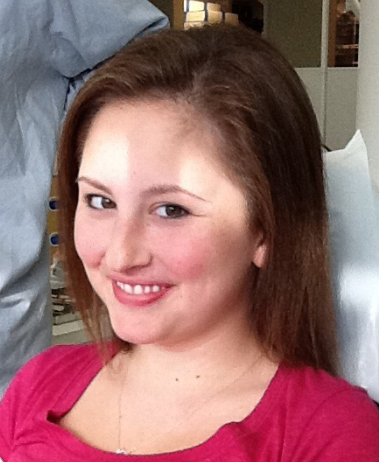
During the time they were creating my over-dentures, the school learned about the program with NFED and applied to become an approved treatment center. I will never forget the day we went to Tufts for an appointment and my doctors told us that they had been approved. This meant that now there would be an approved treatment center in Boston that other families in New England would be able to work with for care and treatment.
Later that year, at a follow-up appointment, my parents and I met Dr. Sujey Morgan. She had learned about my case and the pain I experienced every day, and was interested in learning more and how she could help. At our next appointment, Dr. Morgan explained that she wanted to work with us to do three things; alleviate my pain, build my confidence, and give me an amazing smile. Dr. Hiroshi Hirayama, the Director of the Prosthodontics Department of Tufts, also attended this appointment. Along with Dr. Morgan, they talked about my case and what specific problems they needed to work on.
I learned many things about my situation that I never knew. I learned my jaw was underdeveloped and misaligned, which was contributing to the migraines. I also learned that my upper lip is shorter than average and that because my teeth are so small, it is affecting my speech and digestion. Dr. Morgan reassured my parents and I that they would determine the correct course of treatment. The plan they would come up with would not risk hurting my existing teeth or jaw. We could sense that this team of doctors wanted to help and were interested in my well-being.
After additional appointments for picture-taking, impressions, and x-rays, they had come up with a plan. They decided to try something that was neither temporary (over dentures) nor permanent (implants). They decided to do something in between.
Taking my age and individual challenges into consideration, they proposed that they build a bridge-like veneer device. They planned to use Clear Correct aligners to reposition the teeth that will stay. After they are positioned correctly they will pull any of my baby teeth with shallow roots that could potentially compromise the long-term solution, leaving strong teeth as “abutments” for the device. This new device will be cemented onto my remaining strong teeth and will hopefully last 10 years or longer.
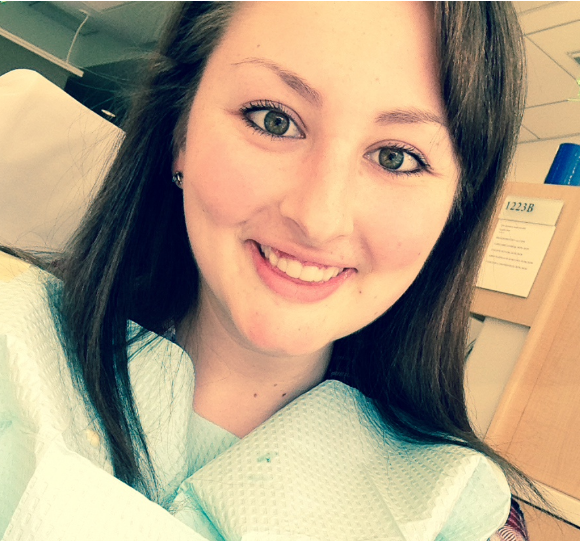
Now, I am a senior in high school, my teeth are almost done shifting. At a recent appointment, I was able to test a temporary, acrylic bridge of what the final device will look like. I am excited to be getting a smile I will be confident about, and I am even more excited to share my story.
When I first met Dr. Morgan, she encouraged me to share my story. Telling my story would build my confidence and probably help others going through a similar situation. So far, I have written an essay for Dr. Morgan to share with her colleagues and students, I wrote my college application essay about my ongoing dental journey, and now I am writing this article for The Educator and the NFED family.
I want to help raise awareness about ectodermal dysplasia, the NFED, and about Tufts School of Dental Medicine as an approved NFED treatment center, so that families understand that they are not alone and that there are incredible resources available.
If you live in New England and are looking for dental care, please reach out to the NFED and ask about setting up an appointment at Tufts. The dentists are incredibly knowledgeable and are truly dedicated to their patients. Between the NFED Family and affiliated treatment sites, like Tufts, you are not alone!
I understand that living with ectodermal dysplasia is not always easy, but by telling my story, I hope to encourage and show families that there is hope. With patience, hard work, and faith, great things have come my way and I know they will for you, too.
Kaitlyn has been an honor roll student throughout her four years of high school. She has recently been inducted into the National Honor Society and the National Honor Society for Foreign Language. She is actively involved in her church youth group and volunteers in her community. She plans to pursue a degree in psychology and social work from the University of New Hampshire and hopes to work with children and families in the future.
Share Your Story
I really enjoyed reading your story. My daughter is three and is awaiting genetic testing for Ed. I am sure she has it due to her dental situation. She does have thin hair but I believe that isn’t a symptom of Ed. But unfortanelty she only has her two front permanent teeth and 4 molars, and about 4 others that aren’t formed completely. I really enjoy reading stories from people that suffer from this syndrome. Gives me confidence that something will be able to be done to my daughter. We like you have no family history of this. Thanks again.
Your story hits home. That picture of you when you are like 5 could be my daughters teeth. She’s 7 and we were just told she is missing 10-12 permanent teeth. I wonder if she has this ?
Hi, Susan. Please contact our office at 618-566-2020 or you can register at https://nfed.org/join-us/ to receive information. We’re here for you and your family.